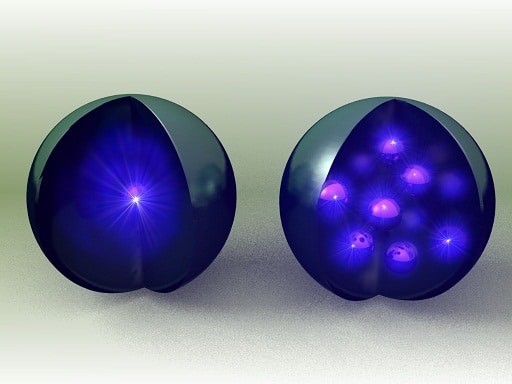Prof. Uri Benin and research student David Mukta developed semiconductor nanocrystals and in collaboration with Prof. Oded Milo from the Hebrew University, Guy Cohen and Prof. Eran Rabani from Tel Aviv University succeeded in characterizing their properties

Researchers at the Hebrew University achieved a breakthrough in the field of nanotechnology after they managed to change the properties of nanocrystals using different atoms that are used as "conductors". In doing so, the researchers paved the way for the production of improved semiconductor nanocrystals that can be used, among other things, for the development of solar energy solutions.
Semiconductor nanocrystals consist of tens to thousands of atoms and are 10,000 times smaller than the width of a human hair. These nanocrystals can be used in a variety of fields such as lighting, solar cells and imaging in biological research and medical diagnosis. Semiconductor materials are materials whose electrical conduction properties lie between conductive materials, through which electricity can pass, and highly insulating materials that do not conduct electricity.
To use semiconductors in electric circuits, you have to add "isolations" to them. In this process, foreign atoms called "solders" are inserted into the semiconductor, thus improving the electrical conductivity. To create this process, the semiconductor industry invests billions of dollars every year in introducing solders that are essential to the production process of many electronic devices such as computer chips, chips for electrical appliances and cars and solar cells.
In view of the importance of the process, known as annealing, for the industry, researchers around the world have invested prolonged efforts in annealing semiconductor nanocrystals to improve their properties while significantly reducing them to nanometer size. However, it turns out that it is precisely the small size of the nanocrystals that makes them resistant to plating. In addition, the physical behavior of inclusions in nanocrystals was unknown to researchers at the time.
In a study published this week in the prestigious journal Science, the breakthrough achieved by the researchers of the Center for Nanoscience and Nanotechnology at the Hebrew University Prof. Uri Benin and research student David Mukta in the field is described. The researchers were able for the first time to develop a simple chemical reaction at room temperature to insert metal atoms from metals into semiconductor nanocrystals. The study found new effects of the ions on the optical properties of the nanocrystals that had not been reported before.
In collaboration with Prof. Oded Milo from the Hebrew University, Guy Cohen and Prof. Eran Rabani from Tel Aviv University, the researchers built a comprehensive picture of how impurities affect the properties of semiconductor nanocrystals. The researchers found that the electrons affect the nanocrystal in unexpected ways as a result of new and intriguing physics arising from the quantum confinement phenomena of electrons in the tiny nanometer dimension of the nanocrystals. "In efforts that lasted five years, we included a large number of techniques that, when applied together, were able to explain the unique phenomena associated with nanocrystal plating," says research student Mukta.
"The research prepares the ground for the development of many potential applications with nanocrystals in the fields of electronics, optics, sensing and alternative energy solutions" says Prof. Benin. "We anticipate and hope that it will now be possible to develop uses of strained nanocrystals to create new types of solar cells, sensors and transistors. The preparation method of such devices can be carried out with cheap chemical approaches that build the devices from the nanometric building blocks 'bottom-up'."
